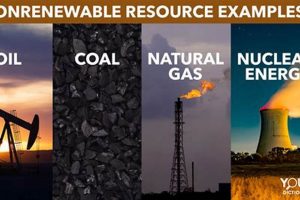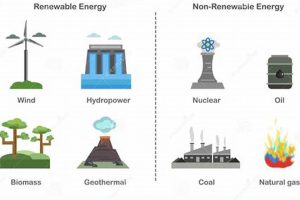
Both renewable and nonrenewable resources fundamentally serve the purpose of supplying energy to power human activities. They are both utilized to generate electricity, provide transportation fuels, and support industrial processes. For instance,... Read more »

Illustrative instances of energy sources can be categorized into two fundamental groups: those derived from perpetually replenishing resources and those originating from finite reserves. Solar, wind, hydro, geothermal, and biomass power exemplify... Read more »

Electricity generation from atomic nuclei involves utilizing either nuclear fission, where atoms are split, or nuclear fusion, where atoms are combined. Uranium, a finite resource extracted from the Earth’s crust, is the... Read more »

The classification of energy as renewable or nonrenewable hinges on the source’s ability to replenish itself within a human timescale. Energy derived from motion, for instance, can be generated from a multitude... Read more »

The renewability of heat energy depends entirely on its source. Geothermal energy, derived from the Earth’s internal heat, is considered renewable as the planet’s core continuously generates heat. Solar thermal energy, which... Read more »

Fossil fuels, such as petroleum, coal, and methane-rich gases, are formed from the remains of ancient organisms subjected to immense pressure and heat over geological timescales, typically millions of years. This process... Read more »

Energy resources are broadly classified into two categories: those that replenish naturally over relatively short periods (renewable) and those with finite reserves that diminish with use (nonrenewable). Renewable sources include solar, wind,... Read more »

Earth’s internal heat, accessible through various geological formations, offers a significant energy source. This heat can manifest as readily available steam or hot water, utilized directly for heating applications or to drive... Read more »




